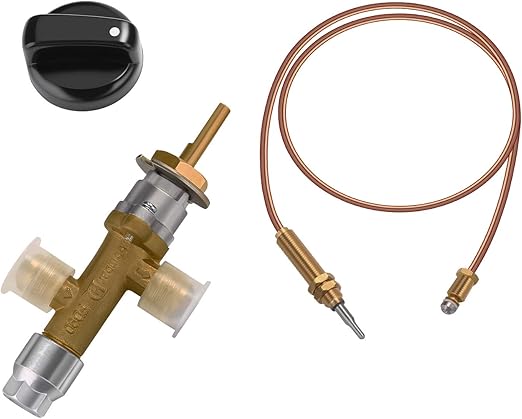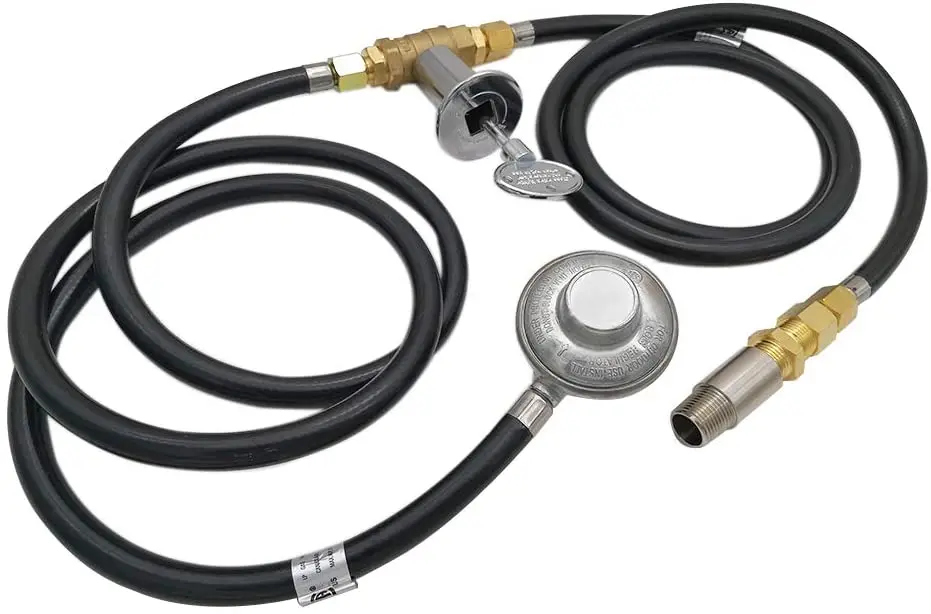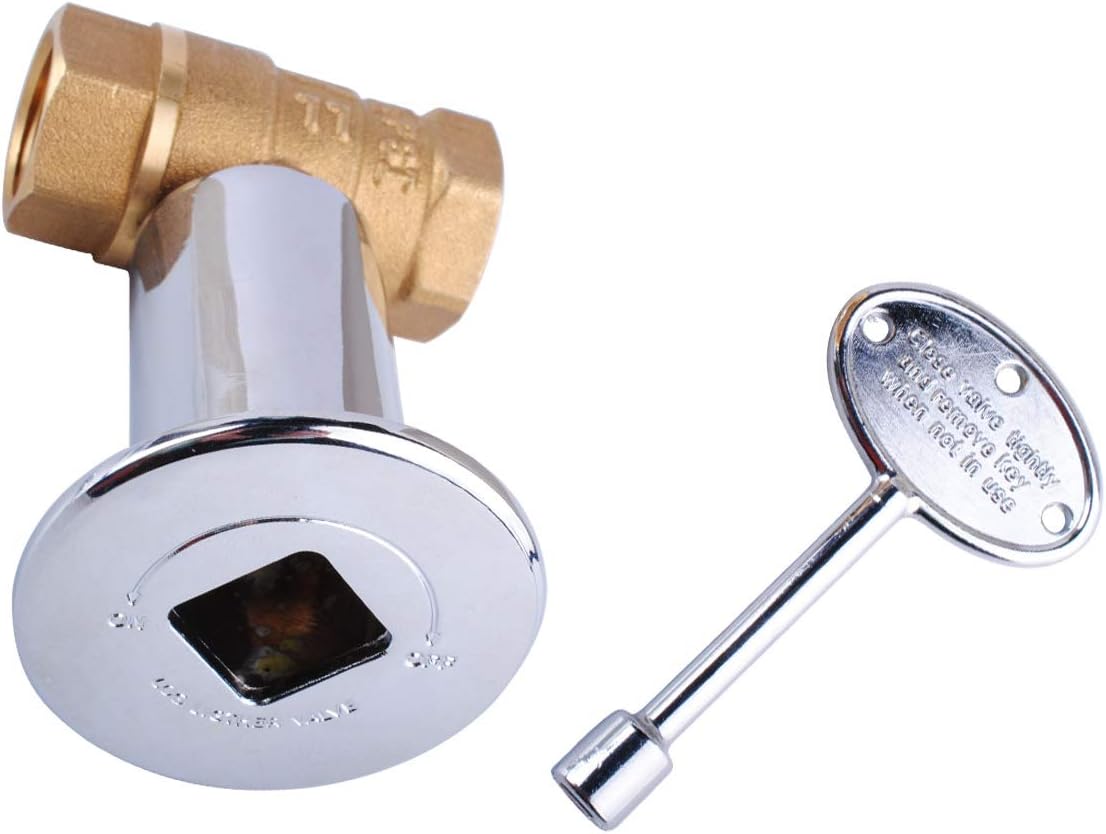Gas Fireplace Valve Kit

A flickering flame on a cold evening can be incredibly comforting. But when your gas fireplace refuses to ignite, it can be frustrating. Often, the culprit lies within the gas fireplace valve kit. This article provides a structured, step-by-step troubleshooting guide to help you diagnose and potentially resolve the issue, ensuring you can safely enjoy your fireplace.
Understanding the Gas Fireplace Valve Kit
The gas fireplace valve kit is the heart of your gas fireplace system. It controls the flow of gas to the burner and ensures safe operation. The kit typically includes:
- Gas Valve: Regulates the gas flow.
- Pilot Assembly: Contains the pilot light, thermocouple/thermopile, and igniter.
- Thermocouple/Thermopile: Safety device that shuts off the gas if the pilot light goes out.
- Igniter: Creates the spark to light the pilot light. Could be a piezo igniter (button-operated) or an electronic igniter.
- Wiring: Connects the various components.
- Remote Receiver (if applicable): Receives signals from the remote control.
Safety First!
Before you begin any troubleshooting, ensure the following safety precautions are taken:
- Turn off the gas supply: Locate the gas shut-off valve (usually near the fireplace or gas meter) and turn it off. Wait at least 5 minutes for any residual gas to dissipate before starting any work.
- Disconnect Power: If your fireplace requires electrical power, disconnect it from the outlet or turn off the breaker.
- Ventilation: Ensure the area is well-ventilated. Open windows and doors.
- Carbon Monoxide Detector: Make sure your carbon monoxide detector is functioning correctly.
- No Smoking: Absolutely no smoking or open flames near the fireplace.
- If in doubt, call a professional: If you are uncomfortable with any step, or if you smell gas at any time, stop immediately and call a qualified gas fireplace technician. Your safety is paramount.
Troubleshooting Steps
Follow these steps in order. Each step builds upon the previous one, helping you narrow down the potential cause of the problem.
1. Basic Checks
Start with the simplest solutions before moving on to more complex troubleshooting.
- Gas Supply: Double-check that the gas supply valve is fully open. Sometimes it can be accidentally bumped or partially closed.
- Pilot Light Setting: Verify the control knob is set to the "Pilot" position.
- Battery Check (Remote & Fireplace): If your fireplace uses a remote control, check the batteries in both the remote and the fireplace receiver unit. Low batteries are a common cause of malfunction. Replace them with fresh batteries.
- Clear Obstructions: Ensure there are no obstructions around the fireplace, such as decorations, furniture, or debris, that could be blocking airflow or interfering with the remote signal.
2. Pilot Light Issues
The pilot light is crucial for igniting the main burner. If it's not functioning correctly, the fireplace won't work.
- No Pilot Light:
- Check the Igniter: If the pilot light won't ignite when you press the igniter button, the igniter might be faulty. You should hear a clicking sound. If you don’t hear anything, try to clean the igniter tip with a dry cloth. If you still hear nothing, the igniter needs replacement (consult a professional or replace based on detailed guides specific to your fireplace model.)
- Check the Thermocouple/Thermopile: After lighting the pilot light (if you can manually light it with a long lighter or match – use extreme caution!), hold the pilot button down for 20-30 seconds. Release the button. If the pilot light goes out, the thermocouple/thermopile is likely faulty and needs replacement (consult a professional). This is a critical safety device, and a failing one can leak gas.
- Blocked Pilot Orifice: A clogged pilot orifice can prevent gas from reaching the pilot light. Carefully clean the orifice with a thin wire or needle (with the gas supply off!). Be gentle; do not enlarge the orifice. If you are not comfortable doing this, consult a professional.
- Weak or Flickering Pilot Light:
- Low Gas Pressure: A weak or flickering pilot light could indicate low gas pressure. Contact your gas company to check the gas pressure to your home.
- Dirty Pilot Orifice: As mentioned above, a partially clogged pilot orifice can cause a weak or unstable flame.
- Drafts: Drafts can also cause a pilot light to flicker or go out. Check for drafts near the fireplace and try to eliminate them.
3. Main Burner Issues
If the pilot light is working but the main burner won't ignite, the problem might be with the gas valve or related components.
- Gas Valve Not Opening:
- Check the Thermostat/Switch: Ensure the thermostat or switch is set to the "On" position and that the temperature is set high enough to trigger the burner.
- Wiring Connections: Inspect the wiring connections to the gas valve. Look for loose wires, corroded terminals, or damaged insulation. Reconnect any loose wires and clean any corrosion with a wire brush. Always disconnect power before working on wiring!
- Solenoid Valve: The gas valve often uses a solenoid to open and close the gas flow. If the solenoid is faulty, the valve won't open. This typically requires a professional to diagnose and replace. Do not attempt to repair the gas valve yourself.
- Main Burner Ignites Briefly and Then Goes Out:
- Thermocouple/Thermopile: Even if the pilot light stays lit, a weak thermocouple/thermopile can still cause the main burner to shut off. If the signal from the thermocouple/thermopile to the gas valve is insufficient, the valve will close.
- Flame Sensor (if applicable): Some fireplaces use a flame sensor to detect the presence of a flame. If the sensor is dirty or faulty, it can shut off the burner even if the flame is present. Clean the flame sensor with a fine steel wool or emery cloth.
4. Remote Control Issues (If Applicable)
If your fireplace uses a remote control, the problem could be with the remote or the receiver.
- Check Batteries: As mentioned earlier, start by replacing the batteries in both the remote and the receiver.
- Receiver Location: Ensure the receiver is properly positioned and not obstructed. Try moving the receiver to a different location to improve signal reception.
- Remote Pairing: Some remote controls need to be paired with the receiver. Consult your fireplace's manual for instructions on how to pair the remote.
- Remote Receiver Malfunction: If the above steps don't work, the remote receiver might be faulty and need replacement. This is usually a task best left to a professional, especially if it involves wiring.
5. Electrical Issues (If Applicable)
Some gas fireplaces require electricity for the igniter, blower, or other features.
- Check the Breaker: Ensure the circuit breaker for the fireplace is not tripped. Reset the breaker if necessary.
- Power Outlet: Verify that the power outlet is working by plugging in another device.
- Wiring: Inspect the wiring for any damage or loose connections. Always disconnect power before working on wiring!
- Transformer (if applicable): Some fireplaces use a transformer to convert voltage. If the transformer is faulty, the fireplace won't work. This requires a professional to diagnose and replace.
Simple Part Replacements (Proceed with Caution!)
Some parts, such as the igniter or thermocouple, can be relatively easy to replace, but only if you are comfortable and confident. Always turn off the gas and power before attempting any replacement. Refer to your fireplace's manual for specific instructions.
- Igniter: Usually held in place by a screw or clip. Disconnect the old igniter and connect the new one.
- Thermocouple/Thermopile: Unscrew the old thermocouple/thermopile from the gas valve and pilot assembly. Install the new one, ensuring it is properly seated and tightened.
Important: When replacing parts, use only replacement parts that are specifically designed for your fireplace model. Using incorrect parts can be dangerous and void the warranty.
When to Call a Professional
While this guide provides steps for basic troubleshooting, some issues require the expertise of a qualified gas fireplace technician.
- Gas Leaks: If you smell gas at any time, immediately turn off the gas supply and call your gas company or a qualified technician.
- Complex Gas Valve Repairs: Do not attempt to repair the gas valve itself. This is a critical safety component, and any repairs should be done by a professional.
- Electrical Issues: If you are not comfortable working with electricity, call a qualified electrician.
- Uncertainty: If you are unsure about any step or cannot identify the problem, it is always best to consult a professional.
- Continuing Problems: If you have tried all the basic troubleshooting steps and your fireplace still doesn't work, it's time to call a professional.
Prevention and Maintenance
Regular maintenance can help prevent problems with your gas fireplace and extend its lifespan.
- Annual Inspection: Have your gas fireplace inspected and serviced annually by a qualified technician.
- Cleaning: Clean the fireplace regularly to remove dust, debris, and soot.
- Ventilation: Ensure the fireplace is properly ventilated.
- Carbon Monoxide Detector: Regularly test your carbon monoxide detector to ensure it is functioning correctly. Replace the batteries as needed.
By following these troubleshooting steps and practicing regular maintenance, you can keep your gas fireplace working safely and efficiently for years to come. Remember, when in doubt, always consult a qualified professional.










